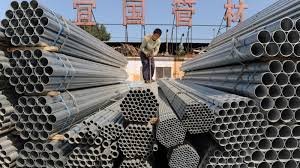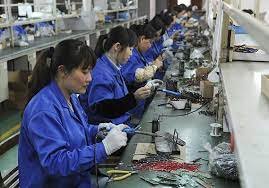Globaltraded.com , China — China’s long-held status as the “world’s factory” is facing a significant challenge, with data from transport economics firm MDS Transmodal revealing that it is losing its manufacturing foothold in several key consumer categories. Countries like Vietnam, Malaysia, Bangladesh, India, and Taiwan are rapidly gaining ground in industries such as clothing, footwear, furniture, and travel goods. Moreover, China’s share of exports, ranging from minerals to office technology, is on the decline.
The major factor contributing to this shift is China’s persistent “Zero Covid” policy, which has disrupted production and manufacturing operations. Antonella Teodoro, a senior consultant at MDS Transmodal, notes that “China’s Zero Covid approach is impacting production, and manufacturers are seeking alternatives to the current ‘factory of the world.'”
The rise of Vietnam, in particular, is noteworthy. Vietnam’s proximity to China and its affordable labor market have made it an attractive alternative for manufacturing. Major shipping lines, including MSC, Maersk, and CMA CGM, have invested in transshipment container terminal projects near Ho Chi Minh City, further underscoring Vietnam’s appeal.
Vietnam’s remarkable success began in 2014 when it started investing in its maritime and manufacturing sectors. It has since experienced almost a 360% increase in far-distance trade, significantly outpacing China in manufacturing trade.
Beyond Vietnam, other nations are also benefiting from China’s manufacturing exodus. Malaysia and Bangladesh have witnessed the relocation of apparel manufacturing, while Taiwan has seen a marginal increase in metal manufacturing.
This shift gained momentum following the U.S. trade tariffs imposed in 2018, as companies began seeking alternative sourcing locations to China. The COVID-19 pandemic further accelerated this trend. The disruptions in supply chains, coupled with lockdowns in major Chinese cities like Shenzhen and Ningbo, prompted an urgent search for alternative manufacturing destinations, particularly in countries like Vietnam.
SEKO Logistics, for example, has observed an increase in intra-Asia trade for raw material flows and finished goods exports, primarily originating from Vietnam and other Southeast Asian nations.
However, it’s not just the manufacturing landscape that’s changing. The impacts of China’s “Zero Covid” policy are reverberating throughout the supply chain, affecting various sectors, including trucking, CFS warehousing, and container yards.
Data from freight tracking firm Project44 indicates a consistent decline in shippers placing orders for container transport by ocean carriers. Vessel capacity departing from Chinese ports has been steadily decreasing since the onset of the pandemic in early 2021.
The Port of Ningbo, the world’s largest port and third-largest container port, recently faced disruptions due to a COVID-19 outbreak, leading to decreased productivity. The “Zero Covid” policies have forced the closure of warehouses and container yards in the Beilun District, impacting the flow of goods and empty container pick-up.
While China’s manufacturing exodus is reshaping the dynamics of the region’s trade and production, it also presents challenges for the country. A surge in exports from neighboring countries is eroding China’s long-standing dominance in global trade, a trend that could reshape the region’s economic landscape in the coming years. (ED)




























































